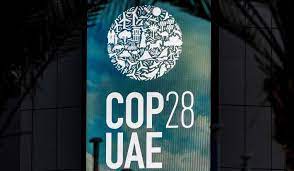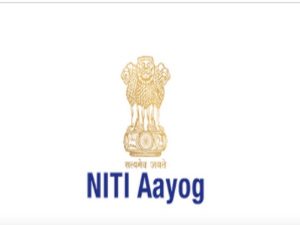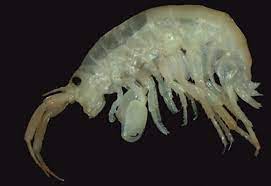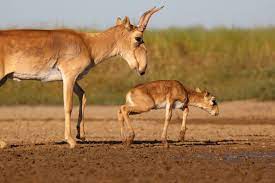Today’s Current Affairs: 14th Dec 2023 for UPSC IAS exams, State PSC exams, SSC CGL, State SSC, RRB, Railways, Banking Exam & IBPS, etc
Table of Contents
Global River Cities Alliance: COP28

The Global River Cities Alliance (GRCA), initiated by the National Mission for Clean Ganga (NMCG) under the Ministry of Jal Shakti, Government of India, was officially launched at COP28, the United Nations Climate Change Conference in Dubai.
- This alliance brings together countries, river-cities, international funding agencies, and knowledge management partners to enhance the existing River Cities Alliance (RCA) formed by NMCG in collaboration with the National Institute of Urban Affairs (NIUA) in 2021.
- The GRCA is a unique platform for knowledge exchange, river-city twinning, and the dissemination of best practices.
- The platform aims to foster shared expertise and provide opportunities for global funding agencies to engage with river cities.
- GRCA stands out as a unique alliance covering 275+ global river-cities across 11 countries
- The event also witnessed the presence of multilateral institutions such as The World Bank, Asian Development Bank, and Asian Infrastructure and Investment Bank, all expressing their full support for the initiative.
The Emissions Divide Report:

A recent study by the Council on Energy, Environment, and Water (CEEW) reveals significant disparities in carbon emissions between residents of developed and developing countries.
- The study highlights that many developed countries exhibit higher per capita carbon emissions than the richest 10% in developing nations like Argentina, Brazil, India, and the ASEAN region.
- The top 10% in developing countries, excluding Mexico and South Africa, emit nearly the same amount of carbon dioxide as individuals in the lower deciles of developed nations, including Australia, Canada, the United States, and Saudi Arabia.
- Individuals in the bottom 10% income bracket of developed countries have carbon footprints six to 15 times higher than those in the poorest decile of India, Brazil, or the ASEAN region.
- The study underscores the carbon emissions disparities even within income groups, emphasizing the complexity of the global carbon landscape.
Indian Tent Turtle : Rescued

Directorate of Revenue Intelligence (DRI) rescued 436 baby Indian Tent Turtles in Lucknow.
- Acting on the basis of specific intelligence developed by Directorate of Revenue Intelligence (DRI), Zonal Unit, Lucknow, seized 436 baby Indian Tent turtles from a person illegally transporting them interstate.
- Indian Tent Turtles size of the carapace ranges from 20 cm to 26.5 cm depending upon the subspecies.
- The colour of the turtles also varies according to each subspecies.
- Subspecies tentoria has an olive or brownish head with a red postocular spot, the carapace is brown in colour with amber or hazel stripe in the first three vertebras and the plastron is yellow with black blotches.
- A semi-aquatic species, mainly found in rivers and associated systems.
- Reproduction is oviparous.
AMRIT Technology:

Indian Institute of Technology (IIT) Madras has developed the ‘AMRIT’ technology for removing arsenic and metal ions from water
- AMRIT Technology has been developed by IIT-Madras, and focuses on removing arsenic and metal ions from water to address water quality issues.
- Using nano-scale iron oxy-hydroxide, it selectively eliminates arsenic when water passes through it.
- This technology is suitable for both domestic and community-level water purification, aligning with the objectives of the Jal Jeevan Mission.
- The ‘Standing Committee’ of the Department of Drinking Water and Sanitation has recommended AMRIT for consideration in addressing water and sanitation challenges.
Arsenic:
- Arsenic is a chemical element that occurs naturally in the Earth’s crust.
- Arsenic can be found in various forms, including inorganic and organic compounds.
- Inorganic arsenic is often considered toxic and can pose serious health risks to humans when present in drinking water, leading to issues like arsenic poisoning.
Indian Forest & Wood Certification Scheme:

The Ministry of Environment, Forests, and Climate Change has introduced the Indian Forest & Wood Certification Scheme to encourage sustainable forest management and agroforestry practices in India
- Sustainable Forest management involves the responsible and balanced use of forest resources to meet present needs without compromising the ability of future generations to meet their own needs.
- Agroforestry is a land-use system that integrates trees or shrubs with crops or livestock on the same piece of land. It combines agricultural and forestry practices to achieve environmental, economic, and social benefits.
- This national certification scheme comprises three types of certifications:
- Forest management certification
- Tree Outside Forest Management Certification
- Chain of custody certification
- It aims to provide market incentives for entities, including state forest departments, farmers, and wood-based industries, adhering to responsible forest and agroforestry practices.
- The Forest Management certification is based on the Indian Forest Management Standard, and a new Trees Outside Forests Standard has been introduced.
- The scheme will be overseen by the Indian Forest and Wood Certification Council (advisory), involving various stakeholders, and managed by the Indian Institute of Forest Management
Delta Ranking Of Aspirational Blocks Programme:

NITI Aayog released the first Delta Ranking of the Aspirational Blocks Programme (ABP), with Tiriyani Block in Telangana securing the top position and Kaushambi Block in Uttar Pradesh ranked second.
- The Aspirational Blocks Programme (ABP) (built on the Aspirational District Programme (ADP)) is an initiative launched by NITI Aayog in January 2023.
- It Enhance governance and improve the quality of life in challenging and relatively underdeveloped blocks across India.
- It Cover 500 blocks from 329 districts in 27 states and 4 Union Territories
- Key Themes:
- Health and Nutrition
- Education
- Agriculture and Allied Services
- Basic Infrastructure
- Social Development
Brandon Hall Group’s Excellence In Technology Awards 2023:

The National Thermal Power Corporation (NTPC), a maharatna, central Public Sector Undertaking (PSU) under the Ministry of Power, has achieved a remarkable feat by becoming the sole PSU in India to win two silver awards at the prestigious Brandon Hall Group’s Excellence in Technology Awards 2023.
- NTPC secured dual silver awards in the categories of “Best Advance in Corporate Wellbeing Technology” and “Best Advance in Augmented and Virtual Reality.”
- NTPC’s award-winning efforts include the creation of an Individual-Centric Health Care Ecosystem, and overcoming diversity and remoteness challenges at NTPC sites, and NTPC’s ‘iGuru’ initiative demonstrates its leadership in adapting innovative technologies for workforce capacity building.
- Brandon Hall Group, a US-based professional development company, recognizes NTPC’s achievements through its HCM Excellence Awards program, known as the “Academy Awards of Human Capital Management.”
- The awards recognize the best organizations that have successfully developed and deployed programs, strategies, modalities, processes, systems, and tools that have achieved measurable results.
Demaorchestia alanensis : New Species Of Marine Amphipod

Researchers at Berhampur University, Odisha, have unveiled a new species of marine amphipod, named Demaorchestia alanensis, in Chilika Lake, contributing to global marine biodiversity.
- Demaorchestia alanensis is a new species of marine amphipod-a shrimp-like crustacea of the genus Demaorchestia.
- The present discovery has added one more species to the genus Demaorchestia, raising the global species number in the group to six.
- It is white in colour and less than 15 millimetres in length.
- It has 13 pairs of legs.
- While three pairs are used for swimming in the water, eight pairs are used for walking on land.
- The other two pairs are used for capturing prey and feeding.
- The species can be distinguished from the other members of the genus by two to three strong, hair-like structures, or setae, on the anterior margin of the propodus of the gnathopod.
Fault Line : Discovered On Canada’s Vancouver Island

A team of geologists, mineralogists, and Earth and ocean scientists affiliated with institutions in Canada, the U.S., and France recently discovered a 72-kilometer fault line on Canada’s Vancouver Island.
- Fault Line is a line determined by the intersection of a geological fault and the earth’s surface.
- A fault is a fracture or zone of fractures between two blocks of rock.
- This is caused by the stresses created as sections of a plate or two plates are moving in different directions.
- All faults are related to the movement of Earth’s tectonic plates.
- The biggest faults mark the boundary between two plates.
- Faults allow the blocks to move relative to each other.
- This movement may occur rapidly, in the form of an earthquake, or it may occur slowly, in the form of creep.
- Faults may range in length from a few millimetres to thousands of kilometres, such as the San Andreas Fault in California and the Anatolian Fault in Turkey, both of which are visible from space.
- Most faults produce repeated displacements over geologic time.
- The fault surface can be horizontal, vertical or some arbitrary angle in between.
- Earth scientists use the angle of the fault with respect to the surface known as the dip and the direction of slip along the fault to classify faults.
Cinereous Vulture : Sighted

The Cinereous Vulture (Aegypius monachus), one of the largest raptors in the world, has been sighted at the Asola Bhatti Wildlife Sanctuary.
- Cinereous Vulture is also known as the Eurasian Black Vulture or monk vulture.
- It is one of the heaviest and largest raptors in the world.
- It is one of the two largest Old-World vultures.
- It is an altitudinal migrant which means it migrates from a higher to a lower altitude.
- This vulture is a bird of hilly, mountainous areas, especially favouring dry semi-open habitats such as meadows at high altitudes over much of the range.
- It is a Eurasian species.
- It is mainly found in Spain and inland Portugal, South France, central Asia, northern India, northern Manchuria, Mongolia and Korea.
- Conservation status
- IUCN: Near threatened
- Wildlife Protection Act 1972: Schedule IV
Asola Bhatti Wildlife Sanctuary:
- It is located on the Southern Delhi Ridge of the Aravalli hill range on the Delhi-Haryana border.
Saiga Antelope : IUCN Category

The Saiga (Saiga tatarica) species category was changed from Critically Endangered to Near Threatened by the International Union for Conservation of Nature (IUCN).
- Saiga Antelope is a large migratory herbivore.
- This antelope has an extremely unusual appearance with an oversized and flexible nose, the internal structure of which acts like a filter.
- Their large noses filter out dust kicked up by the herd in the warm summers and warms the icy air before it reaches their lungs in the winters.
- It inhabits open dry steppe grasslands and semi-arid deserts.
- It is found in fragmented populations within Kazakhstan, Mongolia, the Russian Federation and Uzbekistan.
- Conservation status
- IUCN: Near threatened
- CITES: Appendix II
Cassiopeia A : New Image Of Star

NASA’s James Webb Space Telescope captured a stunning new image of a star that exploded in the supernova remnant Cassiopeia A (Cas A).
- Cassiopeia A is a remnant of a massive star that exploded some 340 years ago.
- It is the youngest remnant of the massive star in our galaxy known to mankind.
- It belongs to the prototypical type of supernova remnant and has been extensively studied by a number of ground-based and space-based observatories.
- The remnant spans about 10 light-years and is located 11,000 light-years away in the constellation Cassiopeia.
- It gives information related to the supernovae phenomenon and its complexities.
- Supernova explosion is the explosion of a massive star.




